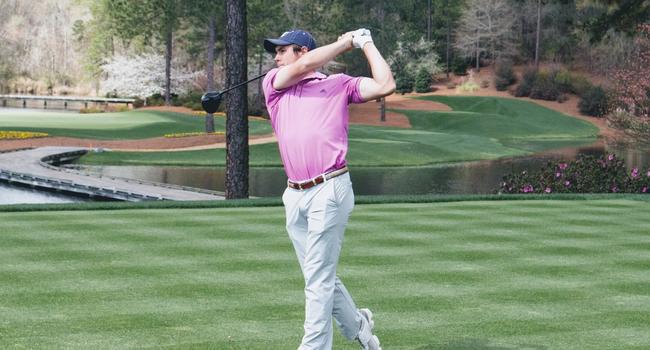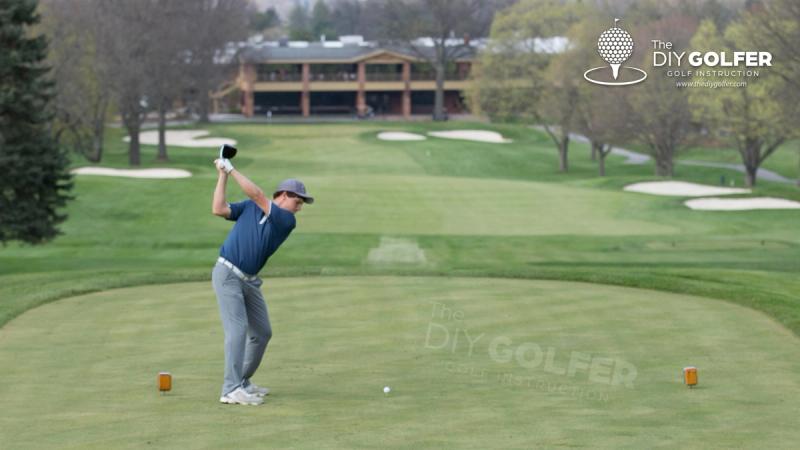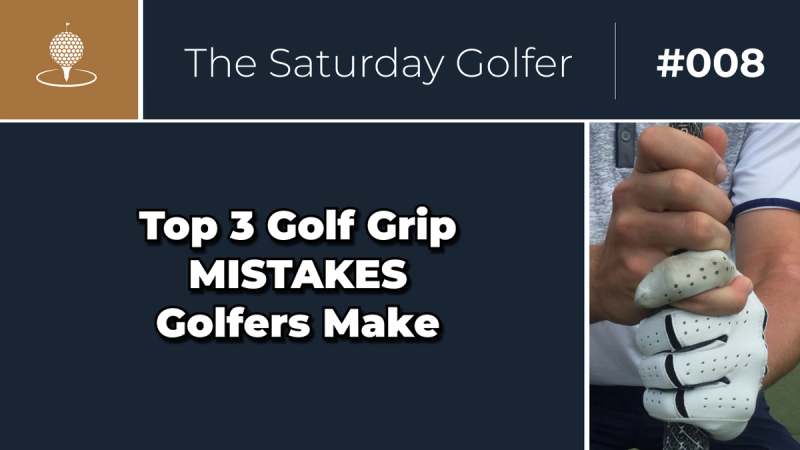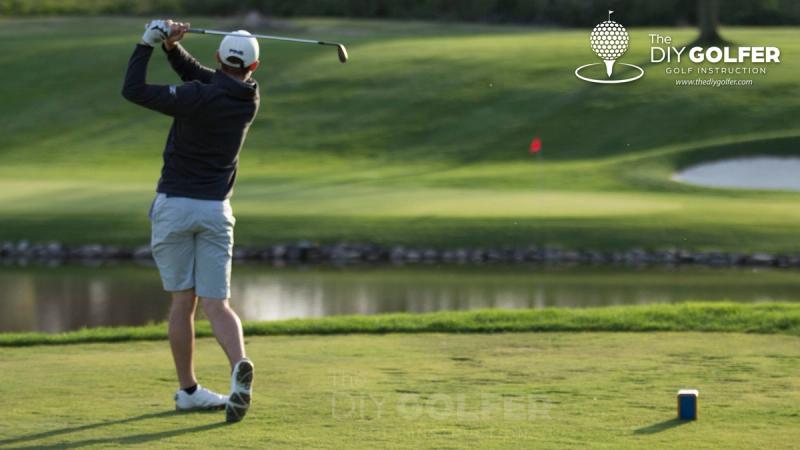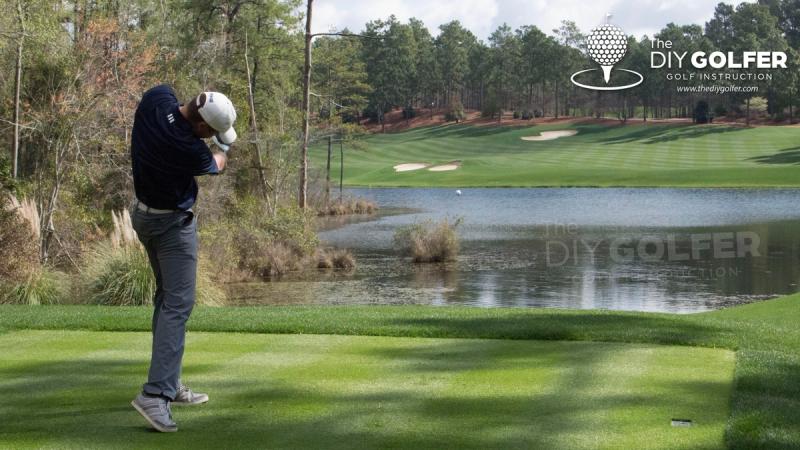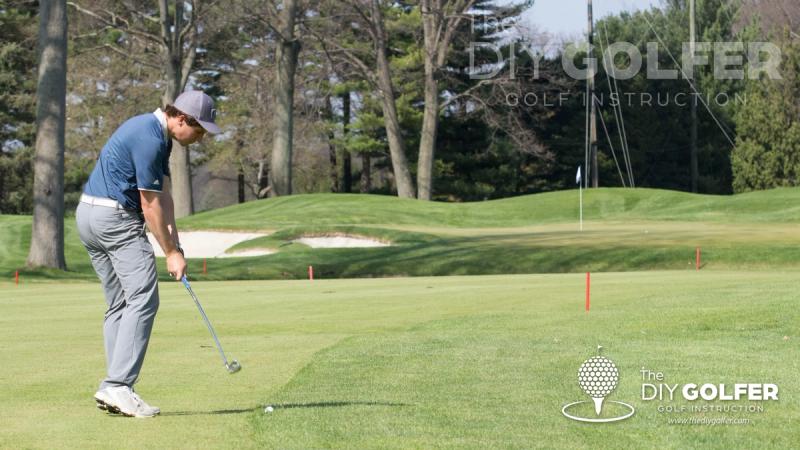Table of Contents

Last updated Nov 03, 2023
What is Lag in Golf? (hint: it's why pros hit it so far)
Creating lag in the golf swing is essential for generating lots of power and consistency. In this post, I'll show you how to generate lag just like the pros.


In the last post, we examined the various ways in which a golfer can power the downswing in the form of "accumulators." We also established that in the golf swing that I am describing during this instructional series, power accumulators 4, 2, and 3 are being used, and are released in that very order during the golf swing. Finally, we talked about the five stages of the "power package," which is the triangle formed between the left arm, shoulders, and right wrist.
During the backswing and transition chapters, I covered stage 1, stage 2, and stage 3 of the power package (accumulation, loading, and storing):
- Accumulation happens from P1 to P4 (backswing)
- Loading happens during the split second where the swing changes direction (P4), and could be described as the "transition" (although I define the transition as the interval between P4 and P5).
- Storing happens between P4 and P5, and is crucial to the golf swing, because it not only stores the power created during the backswing, but also ensures that this power is directed "on-plane."
In this chapter, we will be discussing the interval between P5 and P6, which I simply label as the "mid-downswing," or the "9 O'Clock downswing" (left arm is in the 9 O'Clock position). This is called the delivering stage of the power package, because the power package is being "delivered" to the its release point (somewhere around P6). Homer Kelley states that the storing and delivering phases of the golf swing are remarkably similar, and overlap in a sense. I believe that he was adamant about keeping these two stages distinct because storing mainly focuses on successfully getting the club in position (via the "hip bump") which allows the golfer to use the "aiming point" concept during the delivery (mid-downswing) process, and direct the club on-plane.
Do not worry if the previous paragraph seems rather confusing. This distinction will only become clear in your head after applying these concepts, reviewing them, and applying them over and over again. It is subtle, but important to an effective golf swing.
What is Lag?
So far, I have described how the golf swing is powered in The Golfing Machine terms, but would like to take a moment to explain the concept of lag, because it seems that many golfers (including my former self) believe that lag is something that every golfer must have and must maximize. The more the better right?
Before explaining variances in lag from player to player, we must define the term "lag."
Lag is simply another way of describing Newton's first law of motion, which says that an object at rest will tend to stay at rest unless acted on by an outside force. When the lower body properly initiates the golf swing, it causes a "kinetic chain sequence," which causes the arms, hands, and club-shaft to "lag" behind as a result of their resistance of motion. Lag is not something that a golfer should try to create, because it is the result of executing the golf swing correctly, and the storage of PA2 power.
In addition, different players are going to have differing amounts of lag in their swing, which is based on their "release action." Depending on various bio-mechanical factors, some golfers will release PA2 earlier in the swing than others. This is perfectly fine so as long as the transition is executed properly and PA4 is released before PA2. Take a look at the photo of Justin Rose and Sergio Garcia below:
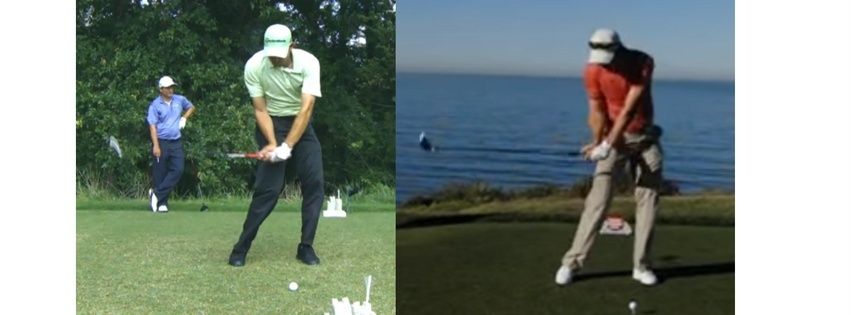
Notice how Sergio gets his hands in front of his body at the P6 position, while Justin Rose does not. They both have "lag" in their swing, but since Sergio has a later release of PA2, he sustains the "lag" longer.
A golfer need not worry how much lag they can create in the golf swing. Instead, they should focus on executing the transition correctly, and then storing and delivering that power which was created in the backswing and loaded in the transition. Remember... Lag is the result of a properly sequenced release of the power accumulators!
Now that you have a better understanding of this concept, we can begin to look at the mid-downswing.
Stage 4: Delivering Overview
The power package delivery process revolves around one concept, which is the "aiming point" concept. I have briefly explored this in the previous post, but did not visually illustrate it thoroughly.
At this point, a golfer should have started to laterally and radially move the hips to initiate the downswing, which will passively drop the right elbow and shoulder on their respective planes (or very close), and the flying wedges will be maintained as shown in the photo below:
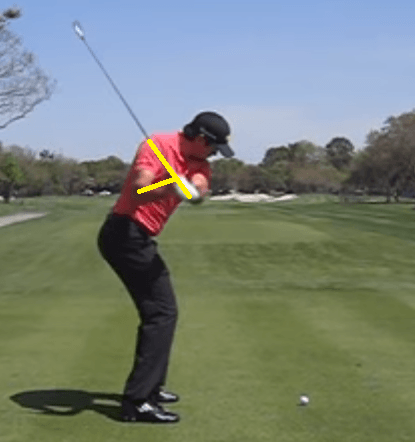
This is at the P5 position, but you can see how Jason Day's right elbow has passively dropped into his torso, and the right shoulder has moved "down-plane." Additionally, his flying wedges have sustained the (just less than) 90 degree angle from each other, meaning the flying wedges are still intact.
As the golfer "delivers" the power package to the release point, it should be "on-plane," and when it reaches P6, the clubshaft will be parallel to the target line, and will disappear from sight in this camera angle:

Although it is quite difficult to precisely measure, you can see how the club-shaft (which has "disappeared") is parallel left of the target line. This is a characteristic of being "on-plane."
Please note that it is critical you setup your camera correctly, otherwise, you could mislead yourself into thinking that your swing is off-plane when looking at this particular position. If the camera is pointed left of the target line, it will appear as if the club is too far inside while a rightward pointing camera will make the swing appear to be "over the top."
And that is a basic overview of the "delivery" portion of the downswing (P5-P6)! Now, we must explore how a golfer can achieve this position.
Aiming Point
As I mentioned in the power accumulator post, I do not fully side with Homer Kelley's method: "The aiming point replaces the ball so you no longer direct the third pressure point at the ball but at the aiming point just as if it were the ball; like an explosion shot from the sand."
I personally find this a bit distracting trying to consciously direct the third pressure point (inside of right index finger) towards an aiming point on the ground.
Once again though, this concept can be useful if interpreted by the individual to their customized way of doing it. In this section, rather than simply describing how Homer Kelley explained it, I would like to offer another way to approach the "delivery" stage of the golf swing. It is simply a "spin-off," or "interpretation" of the aiming point concept.
The Imaginary Golf Ball and the Inside Quadrant
Instead of trying to direct my third pressure point to a "point" along the target line and on the ground, I simply focus my mind on hitting the inside quadrant of the golf ball. Depending on the shot, I may focus on the real golf ball, or I may create an imaginary golf ball along the target line which I can hit the inside quadrant of.
To some, this may sound exactly like the aiming point concept, and I would agree. The only difference is that the golfer is not consciously trying to direct the third pressure point at a spot, but instead, is imagining the club striking the inside quadrant of the ball.
In the end, each golfer should independently decide what is best for his/her game. Whatever interpretation you make of the aiming point concept, make sure that you find a way to get the club into the proper P6 position as shown in the photo earlier in this post. As long as you have achieved this position (assuming a correct camera angle), you have successfully "delivered" the power package to its release point.
Hip Movements
I have extensively described the motion of the hips in the downswing during my transition chapter, but it is important to remember that during the delivery stage, the hips should continue to move! From P4 to P5 (transition interval), the hips will make a small lateral "bump" towards the target, and begin to open. Additionally, the left leg will become braced like a "post" by the end of this interval.
During the mid-downswing, the hips will continue to open, which creates an area of space which the upper body can travel through. If this gradual opening of the hips stops during the mid-downswing, the shoulders will remain open, club-shaft will get under the plane, and the golfer will have to roll his/her hands in a dramatic fashion during the late downswing in order to keep the ball from blocking or block-slicing to the right.
If the hips continue gradually opening during the mid-downswing, this will allow the shoulders and club-shaft to remain on plane, and the golfer will reach a powerful position prior to impact where the weight has braced against the left leg "post" and the proper P6 position has been reached. In the sequence below, notice how Jason Day's left leg is braced by the end of the transition (small yellow line does not change in distance throughout the mid-downswing), but the hips continue to rotate (belt buckle denoted by the yellow circle), slightly lift upward (as a result of other movements), and move marginally forward towards the left leg "post." From P5-P6, the left hip has moved slightly closer to the left leg post (red line), but has not passed this line, and will not pass this line until well after impact.
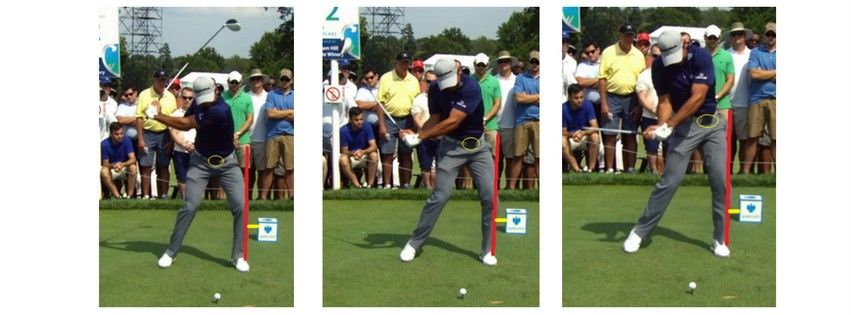
Recap
This is the shortest post of the downswing, partially because mastering the mid-downswing is largely a result of properly transitioning and programming your mind to hit the inside quadrant of the golf ball before starting the swing. It happens so quickly that a golfer should never try to consciously manipulate what is happening during this interval.
All that matters at this point of the golf swing is that the power package is maintained and delivered to the proper P6 position below where the clubshaft is parallel to the ground and parallel left of the target line:

In the next section, I will be talking about the impact interval, which is the most important part of the golf swing from a bio-mechanical standpoint, because without proper shaft, club-head, and club-face alignments, the ball will never reach the intended target with the intended ball flight. These are the laws of physics, and are not independent of each golfer!
